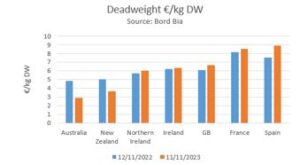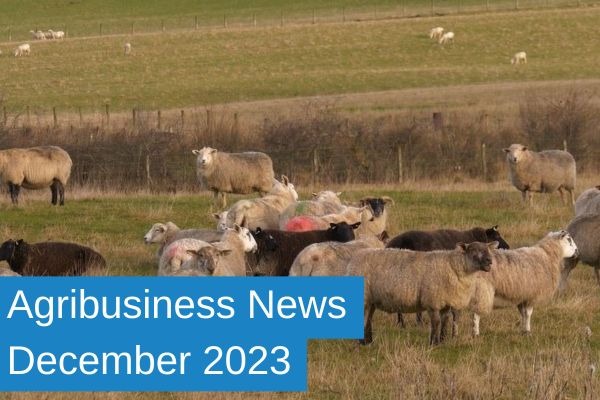Agribusiness News December 2023 – Sheep
30 November 2023Christmas is Coming!
The national Christmas feast, the traditional turkey had supply issues last year, with the impact of avian influenza. This saw some families moving to other meats, where lamb showed to fair well in the seasonal sales. Avian influenza now endemic in the wild bird population, brings a higher level of immunity in the wild bird population, and less virus circulating, reducing the risk to the traditional turkey producer. With a reported 15% less turkey poults on farm this year, again it could mean that the market could be tight, which could result well for lamb sales!
The American Farm Bureau federation has recently published their annual survey results on the cost of a thanksgiving meal. There are no surprises here showing the effect of high supply costs and inflation has risen thanksgiving feasts by 25% since 2019. Lamb in the UK in the week ending (18/11/23) is £0.42/kg higher than it was last year or ~£8.80/lamb. However, for the Christmas market, the consumer tends to invest in good quality, luxury food, which is probably a reason lamb faired so well last year.
Export Favourable
The export market remains very favourable, with a reduced number of lambs on the continent and a high European price, making our lamb very competitive.

The Australian price has substantially fallen over the last year, mainly due to the expansion in the flock and the high availability/supply. The Australian Bureau of Statistics has recently published their slaughter and production statistics for the 3rd quarter of 2023. These show the lamb production in 2023 as the highest on record and that lamb slaughter in Q3 in 2023 is 20% higher than in that in Q3 of 2022.
AHDB has shown that our domestic market is being supplied by an increased volume of imported lamb as the year has progressed. This is especially from Australia, who have access to trade and have a high supply of lamb. Imports from New Zealand are decreasing, while our exports are rising. The balance of supply and demand is at play here.
Vet Attestation
We are very reliant on the export market for meat and livestock products in the UK, with the EU being a major customer. New legislation from the EU requires that from the 13th of December 2023, producers have a vet attestation. This is where producers can prove that an annual visit from a vet has been carried out to view any signs of notifiable diseases and asses for biosecurity risks.
This is relevant for all livestock farmers that produce food that’s end destination is the food chain which may be exported to the EU. However, those who are members of quality assurance schemes, do not need to do anything different, as the rules to comply with these require at least one annual vet visit.
Non-farm assured producers who send animals for slaughter, should obtain a vet attestation. Producers may think their animals will not be exported, but in fact a large proportion of our meat is. If the carcass itself is not exported, other parts of the animals may be e.g., fifth quarter (although the hide does not require a vet attestation).
More information can be found at Defra QA – vet attestations for POAO exports to the EU (v2).pdf (windows.net)
Kirsten Williams; 07798617293

Sign up to the FAS newsletter
Receive updates on news, events and publications from Scotland’s Farm Advisory Service

